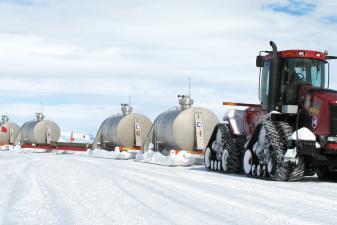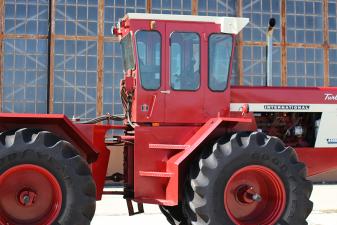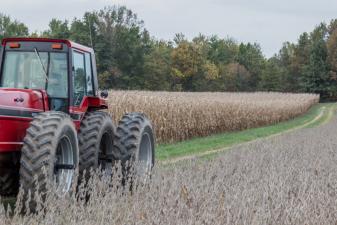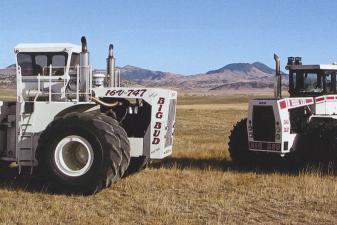Farming the Wilds of Western Australia
An Excerpt from Red 4WD Tractors

This Red 4WD Tractors excerpt takes us into the expansive Australian wilderness, where red clay and arid heat combine to create opportunity. With the help of Steiger 550s, a foreign agricultural entrepreneur endeavors to turn 75,000 acres of inhospitable terrain into high-production farmland. The conditions are brutal, the land is endless, and the scrapers run non-stop, seven days a week.
The drive southwest from Darwin to the remote town of Kununurra in Australia takes nine and a half hours if you obey the speed limit (which almost no one does). The 827-kilometer route has one right turn, no stop signs, hundreds of crocodiles, and about 4,000 kangaroos.
Darwin is already about as far as you can get from civilization, nearly as far north as you can go in Australia, with 4,000 kilometers of red dirt and open highway between it and Sydney.
Darwin is remote. Nine hours away, Kununurra is the end of the earth. The seasonal population of roughly 7,000 people makes it the largest town in the region, and the long growing season and ample water supply has appealed to agricultural entrepreneurs for decades.

Steiger tractors are being used on a development project in a remote portion of Western Australia known as the Kimberley Agricultural Investment (KAI). The project is opening up thousands of acres of new farmland to grow chia, quinoa, and other crops. Steiger 550 HDs are used for precision leveling of the fields and irrigation systems. Lee Klancher
The biggest pop culture event of the century was the filming of Baz Luhrmann’s movie Australia, some of which took place at King George Falls. The bit that made Kununurra famous was that seven women working on the set became pregnant during the filming—including Nicole Kidman, who now calls the water in the falls a “pregnancy potion.”
With average highs above 113 degrees in the Aussie summer and a road that floods and closes for weeks or months at a time during the rainy season, the town is not in danger of being overrun with fans fornicating in the fertile waters.
Water, however, is what makes Kununurra interesting. A dam built in 1971 created Lake Argyle. The hot climate and fertile soil of Western Australia are well-suited to high-production farming—if you have enough water to irrigate. This combination of open land and crop potential has been attracting dreamers for decades. The remote location and brutal heat has been driving them away for just as long.
The area’s tremendous agricultural potential is hampered by infrastructure challenges, and land access is complex. Those challenges, along with heat and pests, make farming the fertile grounds challenging. One man with enough long-range vision and capital to undertake such an ambitious project is Pui Ngai Wu, a forward-thinking Chinese developer who is president of the Shanghai Zhongfu Group.
In 2012, his company signed up to invest $511 million to clear and develop an expanse of land near Kununurra. The 75,000-acre plot will be roughly twice the size of Manhattan. The operation is known as Kimberley Agricultural Investment Pty Ltd., or simply KAI Farms.
The ambitious venture not only requires the land be cleared and a massive farm built; success also requires investment in local transport networks and infrastructure. This is a very long-term investment, one that most anticipate will take a decade or more to show return. Jiangzhong Yin, the CEO of KAI, is confident that the challenges can be overcome. “It’s not a bet,” he is quoted as saying in The Australian Business Review in 2014. “We think it has great potential—greater than anywhere else in Australia because it’s so close to the Asian market.”
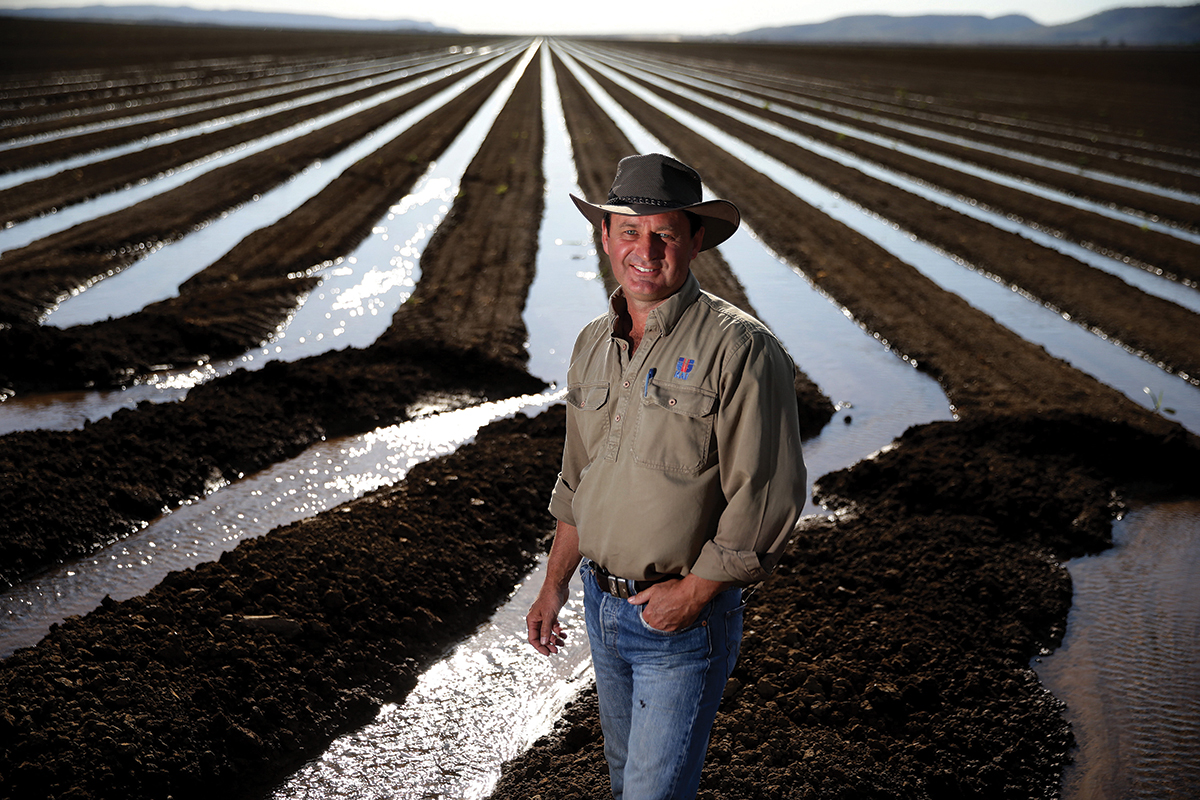
The general manager of the KAI Farms project is Jim Engelke, shown in front of the irrigation furrows that are critical to success at KAI Farms. Colin Murty
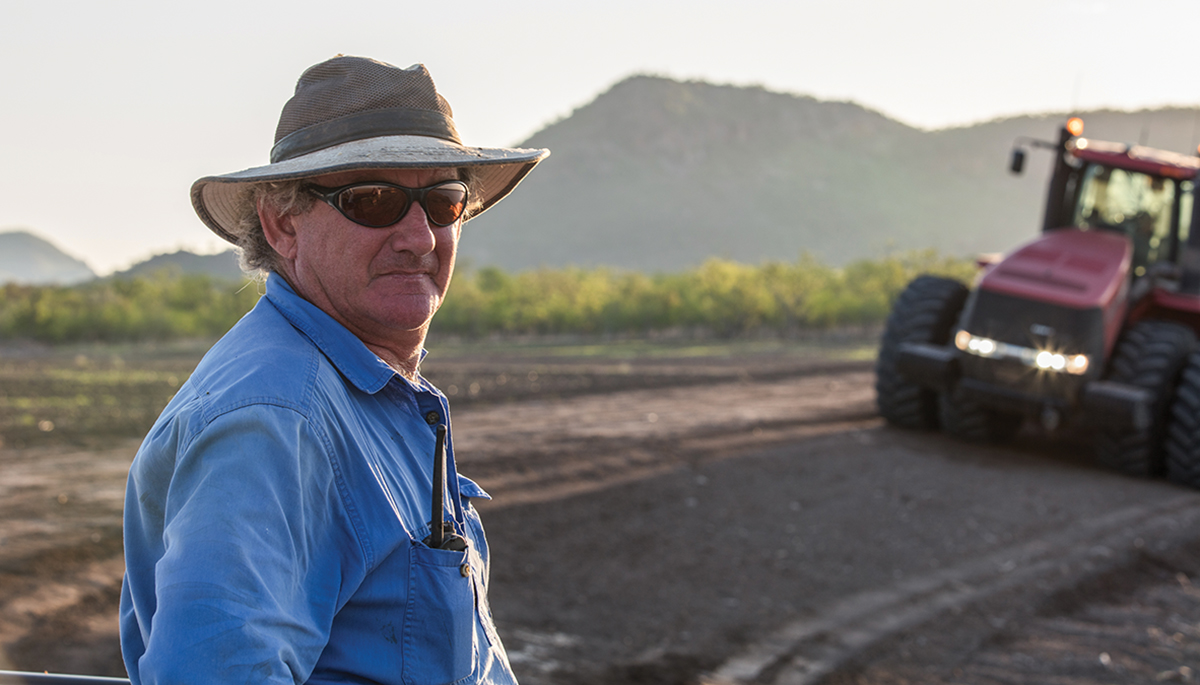
Mick Vinnicombe came to Kununurra to do contract work for local farmers. He was initially the only farm contractor in town. He now manages operators and runs equipment at KAI Farms. Lee Klancher
The day-to-day operation of KAI Farms is run by general manager Jim Engelke and manager Mike Vinnicombe, who have about 55 people working hard to turn 75,000 acres of wilderness into arable land.
They use Steiger tractors to do much of that work and are able to clear about 15,000 cubic meters a day. After it is cleared, the land is then very precisely graded. Water from Lake Argyle comes in to KAI Farms via supply channels (irrigation ditches).
Steiger 550s and scrapers prepare fields that are carefully sloped so the entire 75,000-acre agricultural complex can be watered with the turn of a valve. A few pumps are used to lift return water back into the reservoirs—the rest of the irrigation work is done with gravity.
The scrapers run as much as seven days a week nonstop, in temperatures well above 110 degrees Fahrenheit. The conditions are brutal. The hot clay tears up tires, and the heat and humidity provide rugged conditions. They don’t run at night, as the precision operation is too tricky to manage in the dark.
The project was not easy to get off the ground—the land is leased from the Australian government as well as the Miriuwung and Gajerrong Corporation.
Engelke helped with the proposals for the project in 2011 and has been managing it since the farm started in 2013. As the operation grew, KAI Farms worked with Case IH to start a dealership in the area. Kununurra had a Case IH dealership until 2003, and there was just enough local business to make it work.
By 2017, KAI Farms had 13,500 acres prepared and being worked, growing sorghum, chia, quinoa, and corn. It plans to grow cotton in the near future and eventually work the entire 75,000 acres.
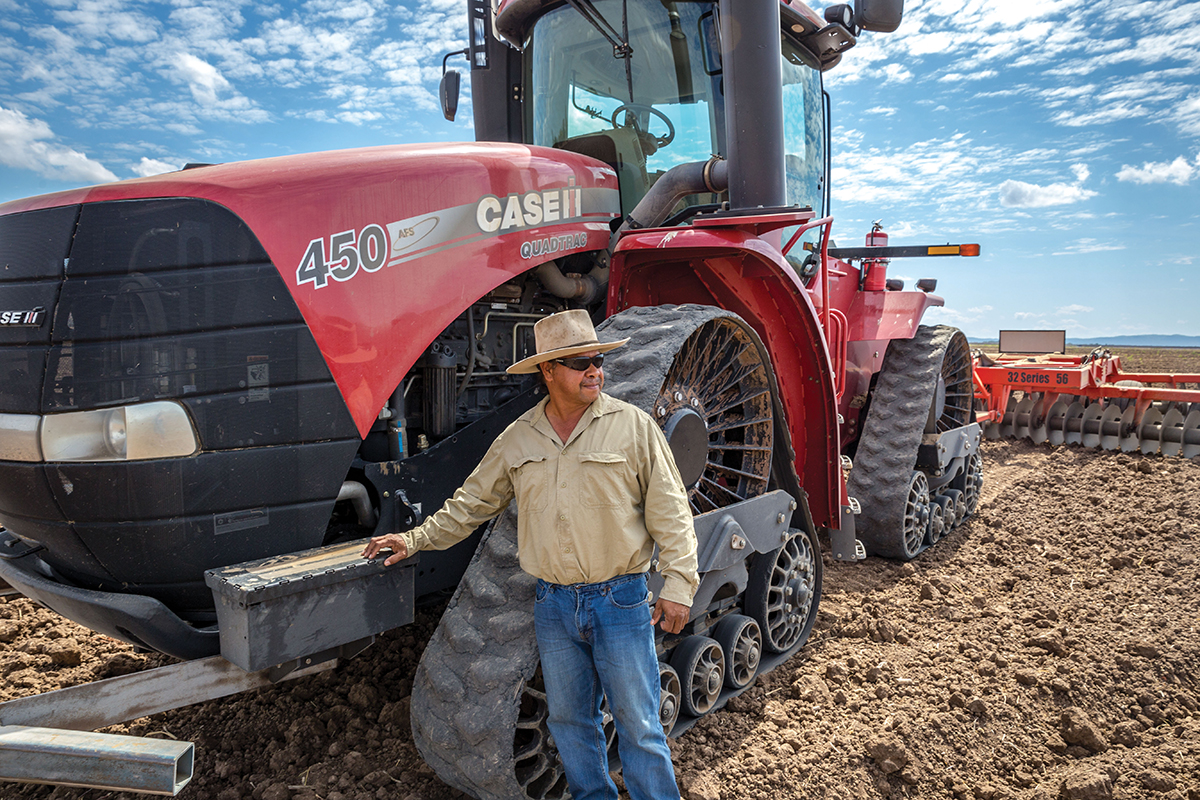
KAI Farms uses 450 and 550 Quadtracs to farm the ground opened on the site and many operator to run the machines, including David Lurda, shown above. Note the heavy wear on the track treads—the heat and conditions are brutal on tires and tracks. Lee Klancher
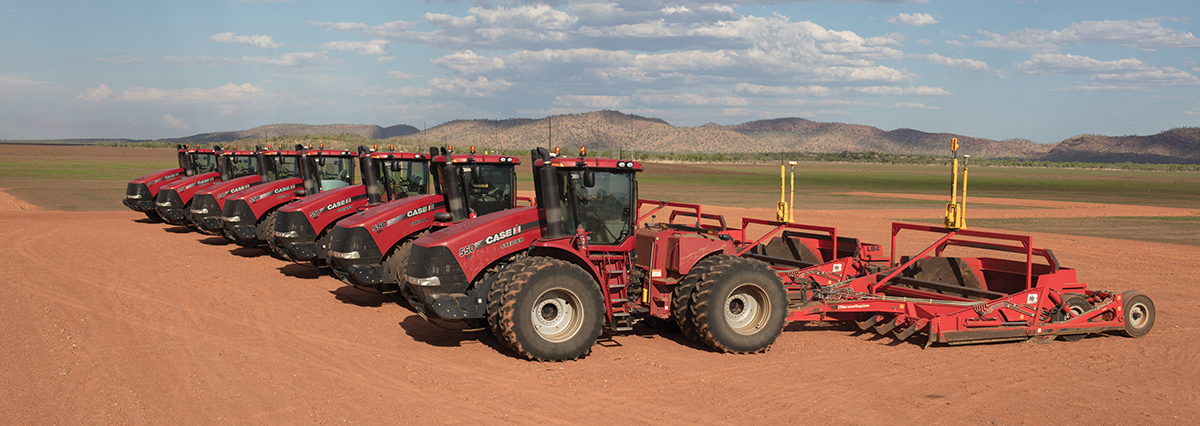
KAI Farms uses these Steiger 550s and scrapers to level the new fields. The farm opened a dealership, which is helpful as the area could use one. It also means the farm can ensure it has a good stock of parts to attend to its own sizable fleet. Lee Klancher
Find more stories on international agriculture, development, and innovation in Red 4WD Tractors by Lee Klancher et al.
The drive southwest from Darwin to the remote town of Kununurra in Australia takes nine and a half hours if you obey the speed limit (which almost no one does). The 827-kilometer route has one right turn, no stop signs, hundreds of crocodiles, and about 4,000 kangaroos.
Darwin is already about as far as you can get from civilization, nearly as far north as you can go in Australia, with 4,000 kilometers of red dirt and open highway between it and Sydney.
Darwin is remote. Nine hours away, Kununurra is the end of the earth. The seasonal population of roughly 7,000 people makes it the largest town in the region, and the long growing season and ample water supply has appealed to agricultural entrepreneurs for decades.

Steiger tractors are being used on a development project in a remote portion of Western Australia known as the Kimberley Agricultural Investment (KAI). The project is opening up thousands of acres of new farmland to grow chia, quinoa, and other crops. Steiger 550 HDs are used for precision leveling of the fields and irrigation systems. Lee Klancher
The biggest pop culture event of the century was the filming of Baz Luhrmann’s movie Australia, some of which took place at King George Falls. The bit that made Kununurra famous was that seven women working on the set became pregnant during the filming—including Nicole Kidman, who now calls the water in the falls a “pregnancy potion.”
With average highs above 113 degrees in the Aussie summer and a road that floods and closes for weeks or months at a time during the rainy season, the town is not in danger of being overrun with fans fornicating in the fertile waters.
Water, however, is what makes Kununurra interesting. A dam built in 1971 created Lake Argyle. The hot climate and fertile soil of Western Australia are well-suited to high-production farming—if you have enough water to irrigate. This combination of open land and crop potential has been attracting dreamers for decades. The remote location and brutal heat has been driving them away for just as long.
The area’s tremendous agricultural potential is hampered by infrastructure challenges, and land access is complex. Those challenges, along with heat and pests, make farming the fertile grounds challenging. One man with enough long-range vision and capital to undertake such an ambitious project is Pui Ngai Wu, a forward-thinking Chinese developer who is president of the Shanghai Zhongfu Group.
In 2012, his company signed up to invest $511 million to clear and develop an expanse of land near Kununurra. The 75,000-acre plot will be roughly twice the size of Manhattan. The operation is known as Kimberley Agricultural Investment Pty Ltd., or simply KAI Farms.
The ambitious venture not only requires the land be cleared and a massive farm built; success also requires investment in local transport networks and infrastructure. This is a very long-term investment, one that most anticipate will take a decade or more to show return. Jiangzhong Yin, the CEO of KAI, is confident that the challenges can be overcome. “It’s not a bet,” he is quoted as saying in The Australian Business Review in 2014. “We think it has great potential—greater than anywhere else in Australia because it’s so close to the Asian market.”

The general manager of the KAI Farms project is Jim Engelke, shown in front of the irrigation furrows that are critical to success at KAI Farms. Colin Murty

Mick Vinnicombe came to Kununurra to do contract work for local farmers. He was initially the only farm contractor in town. He now manages operators and runs equipment at KAI Farms. Lee Klancher
The day-to-day operation of KAI Farms is run by general manager Jim Engelke and manager Mike Vinnicombe, who have about 55 people working hard to turn 75,000 acres of wilderness into arable land.
They use Steiger tractors to do much of that work and are able to clear about 15,000 cubic meters a day. After it is cleared, the land is then very precisely graded. Water from Lake Argyle comes in to KAI Farms via supply channels (irrigation ditches).
Steiger 550s and scrapers prepare fields that are carefully sloped so the entire 75,000-acre agricultural complex can be watered with the turn of a valve. A few pumps are used to lift return water back into the reservoirs—the rest of the irrigation work is done with gravity.
The scrapers run as much as seven days a week nonstop, in temperatures well above 110 degrees Fahrenheit. The conditions are brutal. The hot clay tears up tires, and the heat and humidity provide rugged conditions. They don’t run at night, as the precision operation is too tricky to manage in the dark.
The project was not easy to get off the ground—the land is leased from the Australian government as well as the Miriuwung and Gajerrong Corporation.
Engelke helped with the proposals for the project in 2011 and has been managing it since the farm started in 2013. As the operation grew, KAI Farms worked with Case IH to start a dealership in the area. Kununurra had a Case IH dealership until 2003, and there was just enough local business to make it work.
By 2017, KAI Farms had 13,500 acres prepared and being worked, growing sorghum, chia, quinoa, and corn. It plans to grow cotton in the near future and eventually work the entire 75,000 acres.

KAI Farms uses 450 and 550 Quadtracs to farm the ground opened on the site and many operator to run the machines, including David Lurda, shown above. Note the heavy wear on the track treads—the heat and conditions are brutal on tires and tracks. Lee Klancher

KAI Farms uses these Steiger 550s and scrapers to level the new fields. The farm opened a dealership, which is helpful as the area could use one. It also means the farm can ensure it has a good stock of parts to attend to its own sizable fleet. Lee Klancher
Find more stories on international agriculture, development, and innovation in Red 4WD Tractors by Lee Klancher et al.


